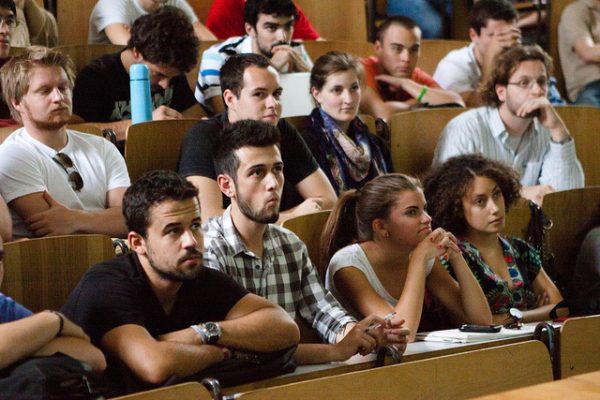
Today we are featuring a guest post by students at Oberlin College, who submitted a #TROT post as part of an active learning exercise for their political sociology class, taught by Professor Christi Smith. If you or your students would like to submit a post, please email tsp@thesocietypages.org.
In today’s contentious political climate, campus political environments have become hotbeds of activism. In addition to the recent slew of (sometimes violent) demonstrations protesting conservative speakers on campuses, some conservative students report that they feel physically endangered by the fervor of their liberal peers. This is leading many to keep a low profile about their political views, or some to even transfer. Others, however, are becoming highly defensive, polarizing, and contrarian in their political views, and are more likely to become a “firebrand” of conservatism as a result of their experience. Sociological research shows how these trends are not entirely new, and a college’s institutional culture can shape conservatives’ attitudes and activism.
We traditionally assume that young adults tend to be more liberal, and then grow more conservative as they get older. Yet political views are more contingent on the act of rebelling versus conforming. Classic sociological research shows that conservative students in the 60s often followed the views of their parents, while more liberal students said they were actively rebelling against theirs.
- Neil Gross, Thomas Medvetz, and Rupert Russell. 2011. “The Contemporary American Conservative Movement.” Annual Review of Sociology 37: 325-354.
- Russell Middleton and Snell Putney. 1963. “Student Rebellion against Parental Political Beliefs.” Social Forces 41(4): 377–383.
More recent studies focus on mobilization in college conservative movements, finding that institutional features of different schools can change how these groups express their beliefs. College professors tend to be more liberal, due to their advanced educational backgrounds, the disparity between their level of education and their income, and their demographic trend towards identifying with more liberal religious chapters. Some schools foster a culture of dialogue where conservative students can engage these ideas as equals, while other, often larger, schools create an environment where confrontational activism is the best way to be heard.
- Neil Gross and Ethan Fosse. 2012. “Why Are Professors Liberal?” Theory and Society 41(2):127-168.
- Amy J. Binder and Kate Wood. 2013. Becoming Right: How Campuses Shape Young Conservatives. Princeton University Press.
- Ziad Munson. 2010. “Mobilizing on Campus: Conservative Movements and Today’s College Students.” Sociological Forum 25(4):769-786.

Comments